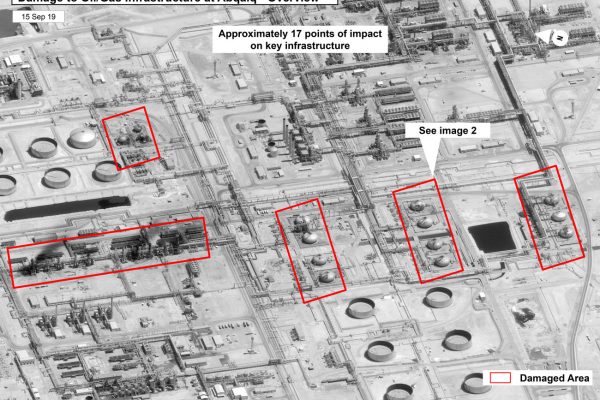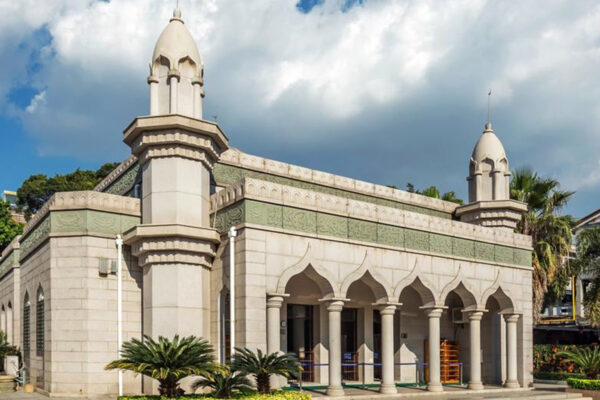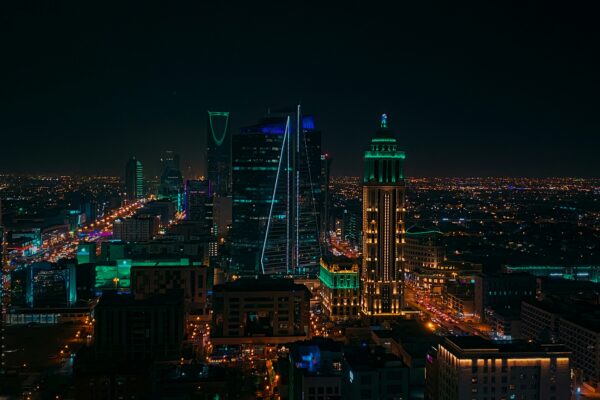On the 14th of September, Saudi’s major oil processing plants were attacked, rocketed with a number of explosions. The two refineries, Abqaiq and Khurais, were attacked from the air, with the strikes highly sophisticated and on a large scale. According to US government satellites, at least 17 areas were damaged with explosions after the attack on the two oil sites. The larger facility, Abqaiq, houses valuable equipment and storage tanks with flammable materials, and has long been warned of being a potential target during the Saudi-led war in Yemen.
The Saudi-led war in Yemen has been continuing on for four years, with human rights groups claiming massive human rights abuses and war crimes being committed indiscriminately in the region on the civilian population. Saudi Arabia has been fighting against the Houthi rebels of Yemen, who in turn were fighting against the pro-Saudi Yemeni President Hadi. After Hadi was ousted by the Houthi rebels, the Saudi-led coalition in Yemen have continued the horrific fight against Houthi rebels, with tens of thousands of Yemenis killed and hundreds of thousands more displaced and suffering under starvation and lack of medical care. Many have called the crisis in Yemen a state-conducted genocide.
Where this recent oil attack in Saudi gets messy, however, is with the blaming of who conducted the attack. Since the incident, there has been wide speculation and finger-pointing as to who was really behind these attacks, with the US, Yemen, and now Iran dragged into the astonishing attack on one of Saudi’s most important oil facilities.
Houthi rebels in Yemen claim responsibility
After the attack on the 14th, Houthi rebels in Yemen publicly announced that they were behind the attack on the Saudi oil facilities, claiming they had launched drones to strike the areas. Despite Houthi rebels from Yemen previously being behind drone attacks that reach past the border into Saudi, many experts have begun to question this particular claim.

While satellite images show 17 points of impact on the oil facilities, Yahya Saree, the Houthi spokesperson, only claimed 10 drones were launched by the rebels. In addition to this discrepancy, the oil facilities in Saudi lay more than 500 miles from the border with Yemen. Houthi drone weapons have never been able to have this range in the past, and experts point to the fact that Houthi weapons simply would not have the range to attack these oil facilities in this case as well. Despite many experts questioning the truth of the statements from the Houthis, the rebels continue to claim responsibility for this attack.
Saudi points to Iran for blame
While Saudi acknowledges previous Houthi rebel attacks amidst their war in Yemen, Saudi Arabia seems particularly bent on putting the blame elsewhere for this particular attack. At a press conference on Wednesday, the Saudi spokesperson for the Saudi-led coalition fighting in Yemen, Col. Turki Al-Maliki, displayed several examples of the drones that were recovered from the facilities that were attacked over the weekend.
Al-Maliki then claimed that without any dispute, the attacks were “unquestionably sponsored by Iran”, and attempted to show evidence that the attacks came from a northern direction, and not from the position of Houthi rebels in Yemen. At the press conference Al-Maliki stated:
[The] precision impact of the cruise missiles indicate advanced capability beyond the Iran proxy’s [Houthi rebel force’s] capacity…Despite Iran’s best efforts to make it appear so, their collaboration with their proxy in the region to create this false narrative is clear. [This is] an assault on the international community… Those responsible should be held accountable for their actions.”
The missiles being displayed by Saudi as having been behind the attack have been acknowledged as being similar to Iran’s Ya-Ali cruise missile, which is a land-attack missile that is capable of traveling hundreds of miles. Despite Saudi’s claims of Iran being fully behind the attack, many experts are still analyzing the satellite images, with some claiming that the attacks seem to have rather come from the west from the direction of Houthi rebels instead of the north as Saudi is claiming.
US joins Saudi in blaming Iran
The United States has since joined with Saudi Arabia in holding Iran fully responsible for the attacks on the oil facilities, with US Secretary of State Mike Pompeo arriving in Saudi Arabia on Wednesday stating that this attack constitutes as an “act of war”.
US President Trump has since stated that the US had “many options” in response to Iran, and that “there is the ultimate option, and there are options a lot less than that. And we’ll see. We are in a very powerful position”.
While Trump’s comments balance dangerously between another questionable rant and a potentially severely dangerous inclination towards open war, the US response to the attacks in Saudi have been telling: while the evidence provided by Saudi Arabia still remain questionable at best, the US has already jumped on the bandwagon of accusing Iran of war crimes despite the Houthi rebels in Yemen publicly claiming responsibility.
Iran’s response to the accusations
As of yet, there has been no official response from Iran regarding the accusations by Saudi Arabia and US about the attack on the Abqaiq and Khurais oil facilities. There have been reports that Iran had sent a diplomatic note stating:
If any action takes place against Iran, the action will be faced by Iran’s answer immediately.”
According to Reuters news agency, an adviser to Iran’s president is quoted as saying Saudi Arabia “knows nothing” about the attacks on the oil facilities. Iranian President Rouhani has also reportedly told his cabinet that Saudi should take this attack by the Houthis as a warning, stating that “they attacked an industrial center to warn you [the Saudis]. Learn the lesson from the warning”. As of now, Iran continues to stay clear of direct involvement in this growing international crisis, with the Houthi rebels continuing to claim full responsibility.
The clash of narratives
As of now, the attack on Saudi’s oil facilities continues to be shrouded in confusion and finger-pointing. The Houthi rebels in Yemen continue to claim responsibility, while Saudi Arabia, despite it’s questionable evidence, ignores the Houthis and openly blames Iran, its regional rival, for these astonishing attacks. Iran remains largely silent, while the US, in lieu of Trump’s usual tactics, have quickly threatened Iran for their supposed involvement in the attack on Saudi.
Since the Saudi’s press conference blaming Iran for the attacks, Houthi rebels have again issued a public statement, this time threatening the United Arab Emirates, who are also heavily involved in the fighting in Yemen. Yahya Saree, the Houthi military spokesperson, stated:
We announce…we have dozens of targets in the UAE – among them Abu Dhabi and Dubai – and they can be targeted at any moment. If you want peace and security for your facilities, and towers made of glass that cannot withstand one drone, then leave Yemen alone.”
In a region marred by historic border clashes and foreign influences tearing apart regional alliances, Saudi Arabia seems adamant on blaming Iran for this most recent attack. Regional rivalries and partnerships seem to take precedence over the truth of attacks such as these, and while the truth of who was behind these attacks will clear up much of the doubt and finger-pointing, many are skeptical as to whether the truth will ever be known.
For now, Saudi Arabia’s claims against Iran remain under scrutiny, and the Houthis in Yemen continue to threaten the region with retaliation while the US further promotes its blind partnership with Saudi against Iran. Despite all of this, the indiscriminate killing of Yemeni civilians continue, and the governments of all those involved move with impunity in regards to the suffering and deaths of civilians.





